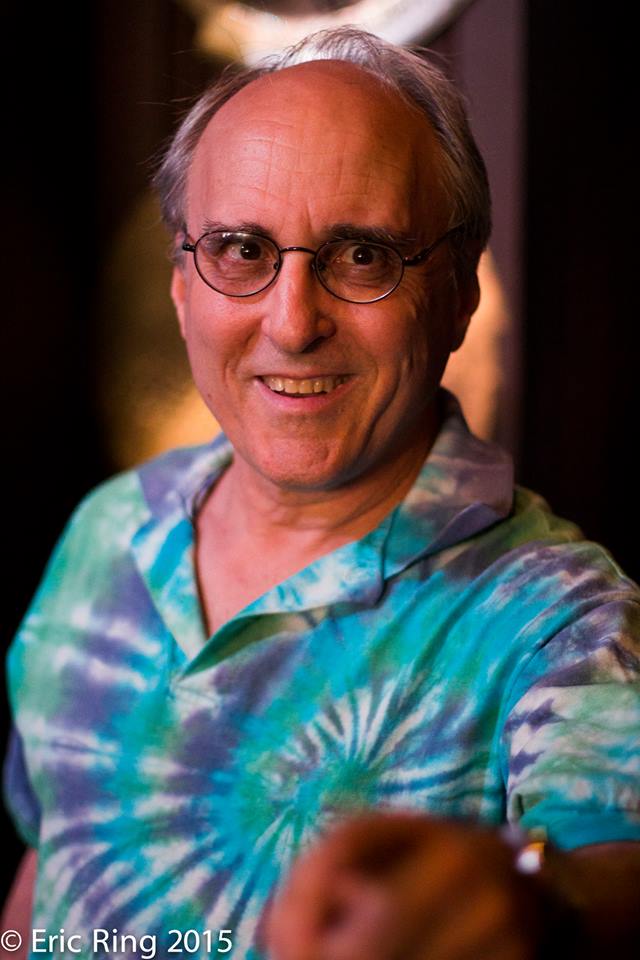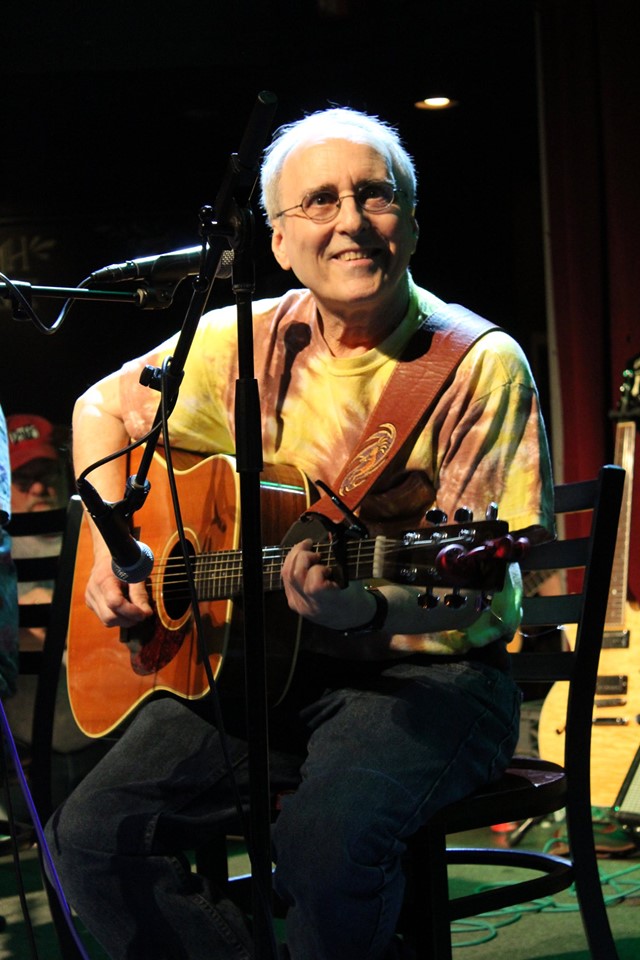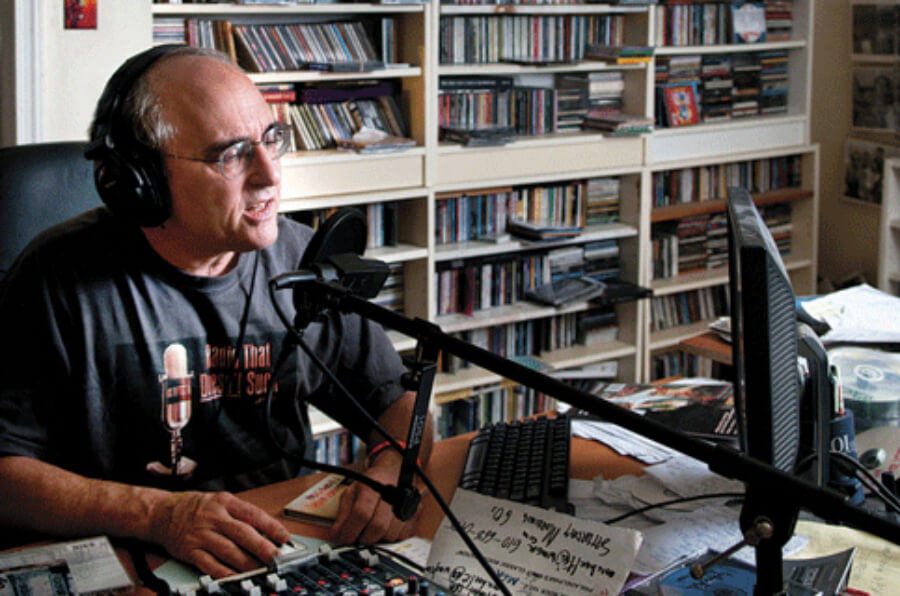Michael Tearson is an American pioneer underground DJ, concert and special appearance host, author, recording artist and actor. In 2016, he was inducted into the Hall of Fame, awarded by the Broadcast Pioneers of Philadelphia.

In May of 1967, while at home from his first year of college, Tearson went to the 15 Below Coffeehouse in Timonium near the Maryland State Fairgrounds to participate in the talent show. Before his performance, a very young Emmylou Harris, age 19, made her appearance, taking the audience by surprise with her amazing voice and talent. Not getting noticed for his own performance, Tearson quickly realized that he needed to make a change. He befriended Harris, beginning a lifelong friendship.
As an undergraduate Tearson had his first on air appearance with WXPN from 1967 to 1970. This was the very first FM Rock shift on WXPN; the show was entitled “The Attic.” In January 1970, Tearson joined WDAS-FM Hyski’s Underground as an overnighter. Tearson has been a longtime member of “Broadcast Pioneers,” and he has been involved with FM radio in the United States since its infancy. Tearson obtained a Bachelor’s Degree in Political Science in 1970 from the University of Pennsylvania. In June of that year, Philadelphia’s WMMR hired Tearson as a Musical Director and weekend disc jockey. Tearson then moved into the late night personality segment in September, and became a popular on air voice until 1976. Tearson returned two years later to WMMR in 1978 to the 10PM to 2AM time period as “Michael Tearson.” His specialty shows include: “Psychedelic Psupper”, “For Headphones Only”, “The Import Show”, “Import/Export” and “Gorilla Theatre”.
In March 1992 after leaving WMMR, Michael Tearson started an on-air show at WXPN which included a free-form hour-long segment called “The Attic”. Tearson started at Sirius Radio (Sirius Folk Town) in July 2004. He was also the main producer and voice of “The Bob Dylan Radio Hour” which aired twice on Sundays. Tearson moved to “Sirius Classic Vinyl” which he broadcast Monday through Friday in the afternoons. He was picked up to work on “Deep Tracks” in November 2008. In July 2011, Tearson released Stuff That Works which was a collaboration of friends that pulled together to create music that Michael Tearson called “A Philosophy”. On July 20, 2015, Tearson announced his departure from Sirius/XM Radio after 12 years on the air, soured by corporate tinkering with his program. Tearson also continues to contribute to Radio That Doesn’t Suck and at Iradiophilly, Philadelphia’s Internet Radio Community on the Plateau channel.
Brant Buckley:
How did you get into radio?
Michael Tearson:
In 1966 as a freshman at Penn, I went to WXPN because I wanted to do radio. I made one mistake as a freshman. I had a fresh idea that nobody had ever thought of before. That idea was an Electric Folk Music Show that was an obvious precursor to Album Rock. Freshmen weren’t allowed to have ideas. I was drafted and sidetracked by Jonathan Takiff and Lee Eisenberg who had pretty remarkable careers themselves. They had a second city-like show called ‘The Underground.’ I tended to play the neurotic kid parts and I did that for a year.
I went to ’15 Below Coffeehouse’ in Timonium and they asked if a woman would go on before me. She did and no-one saw or heard me because they were in shock and awe from the nineteen year old Emmylou Harris. We met and I came up with two things: I needed to be friends with her and I needed a plan B. We are still friends.
When I went back to college, I went back to WXPN and on October 27, 1967 I did the first Album Rock Show. By January, some Saturday and Sunday morning spots did Album Rock. I was one of the first to take one of the Saturday spots. It was a later spot because I didn’t want to get up any earlier than necessary. It took off. By the Spring of 1969, in my Junior year, WXPN had enough momentum to do something unprecedented; A college radio listener supported marathon to stay on for the summer. It was working and I realized I was going to give the radio thing a try. I landed on WDAS-FM in January of 1970 during my final semester. I worked full-time as a D.J. and I was drafted to WMMR in June 1970 as the music director and part time air. I insisted on it because it was my primary interest. In September, I was promoted to the late night spot. I was the prime time of the station much like the morning drives are now. It was six and half years of brilliance. I was fired during Christmas of 1976.
A year or so later, Jerry Stevens who hired me was brought back for a second run at program director. He called me and said he was going to get me hired. He told me to be patient as it would take some time. When WMMR had its 10th anniversary as a rock station, Jerry brought me in. I went through the library and cleaned out everything and the station sounded better immediately. He had me curate the 10th anniversary. It was called ‘Rock Bottom’ because the station’s ratings were at an all time low. Jerry went to the station manager and said, ‘I have to put Michael Tearson on. He was an integral part and it won’t be right to work without him.’ Everything started to take off. I was there from 1978 until 1992. The station was a spectacular success. I do consider myself one of the true architects of Album Rock Radio. The best thing that can ever happen to an artist is to work in a form that is brand new, has no rules, no history and everything is possible. That is what we did with FM radio.
Can you talk about your current shows Radio That Doesn’t Suck and Iradiophilly?
I was on WMGK with a Saturday morning 60’s show. I wanted to call it Psychedelic Psunrise but they liked Saturday Morning 60’s. I said, ‘Let’s get together and maybe we can come up with something even more banal.’ That started around 2002. In January of 2013, I was cut loose.
Within a couple of days, I was brought into Iradiophilly. I was already doing Radio That Doesn’t Suck which I went to after my stint at Burlington County College which is now gone. I was fired there for basically telling the station manager what I really thought of him. I was invited to Iradiophilly and it’s the perfect platform for me because I can do anything. The hours are not regulated to sixty minutes and I can go up to seventy eight minutes if I want. That went on until about 2014 when they upped the royalty rates. Everything was shut down for a few years. It is now back. As for Iradiophilly, they brought me in to do a show called The Marconi Experiment after the first show ever on WMMR with Dave Herman. I did an interview with Dave that is still up on their website. Six months into the project Dave was arrested in a sting. I rebranded the show successfully and kept the show name. I dropped Dave’s show opening theme instead using the music that opened the Little Rascals films. The theme was by Leroy Shield. It was a perfect comfort zone to start the show and it also saved me thirty seconds. I do three shows a week now. I added The Attic Show on Iradiophilly. I just did my 400th show for The Marconi Experiment and I am closing in on 300 episodes of The Attic Show. Since the restart, I have done about 170 Radio That Doesn’t Suck Shows. I’m closing in on 3,500 hours of original work from home.
What are some challenges a D.J. faces?
There is no money for doing radio online. Not a penny. I do it because between Social Security and my Union Pension from my WMMR years, I get by just fine. I can afford to live a lean artists life. Radio is my passion. It fit me and I fit it. I was so successful at the late night shift for WMMR that people never thought of moving me into a day time shift. I showed people that I was really good in the daytime much to everyone’s shock and surprise. It has been a twisty trail. I never did get the money or the respect that some of the others got. One thing I have noticed is that some of my colleagues: Pierre Robert, John DeBella, and Ed Sciaky often would coldly blow people off when people would tell them how much they liked their work. I saw that as bad business. You have to give them the best moment you can because that is what they will take from that moment of who you are and what you are. I will always give someone the best moment that I can.
You have helped many artists get airplay. Who have you helped?
A few years before Chris Squire passed, he was answering questions on the Yes website. He talked about Philadelphia and he gave me credit for breaking Yes, not Ed Sciaky, who is also credited being the first to play Springsteen. I was the first to play Springsteen’s ‘Asbury Park’ album. It was a team effort. WMMR was an artist breaker and considered the breakout station in the country. I thought we were the best of our kind in the country. With all modesty, I think I may have been the best late night guy in the country.
Out of all the radio shows you have done, do you have a favorite?
Yes. The Bob Dylan Radio Hour Show I created for Sirius XM in 2002. It consisted of people from all over the world doing Bob Dylan songs in wildly different styles. There were also rare Dylan performances and live stuff. He had put a lot of live stuff up on his website. That show only worked for Bob Dylan and no other songwriter. Take the Beatles for example. When people cover them they aren’t much different. Joe Cocker is the exception. People are pretty faithful to what The Beatles do. With Dylan, a lot of the recordings are rough drafts and they can go anywhere. He has recorded four different kinds of lyrics to ‘Tangled Up In Blue’.

How was working for Sirius different than terrestrial radio?
The pay was lower and they served me up a show. In the pre-merger years, I was going up to New York City to do the shows when they finally put me on Classic Vinyl. They should have put me on Sirius Disorder, the freeform channel. I was born for that and that channel was born for someone like me. Before I was on Classic Vinyl, I was on Folk Town for three months before they shut it down; The Bob Dylan Theme Time Radio Hour which does sound suspiciously like The Bob Dylan Radio Hour name. I consider him ripping me off for the name put me into the elite fraternity of people that Dylan ripped off ideas from for his own use. It is the greatest left handed compliment I have ever received. His contract with XM prohibited anyone else from doing a Dylan-themed show. So he stole the show name and then took the bread off the table.
I was moved over to Deep Tracks on Sirius XM and I flourished there. I was part time and part timers never really got the respect they deserved and the pay didn’t change for twelve years. Earle Bailey who I worked with at WMMR co-founded Deep Tracks with the late George Taylor Morris. He brought me in during the merger and told me my marching orders were, ‘Take what we give you and make it better.’ By 2015, Earle had to go in and get a stint in his heart and came out with a triple bypass. Instead of filling in for a week, I did eight weeks of seventy hour radio weeks. It was the heaviest I ever worked and for those weeks and it’s the most I’ve ever been paid. The guy who was managing the station and took over for Earle, who’s a very good friend of mine, his mother died and he was out for three months on grief leave. They changed his position from Deep Tracks and the guy they put on was dumbing it down and removed my flexibility. I finally decided I didn’t need the money as my Union Pension and Social Security was coming in. I walked away and quit on the air. It was over in fifteen minutes and there was no respect or appreciation. Even though the listeners love Sirius XM, I was not treated as well as I should have been.
Who have you interviewed on air?
I didn’t interview a whole lot because being on from 10 PM to 2 AM on MMR is when musicians are working. My favorite interview I did was with Captain Beefheart. He was doing the stream on consciousness nonsense riffing style that Bob Dylan pioneered. We became fast friends. We had lunch at the late Pub Tiki which was on 18th and Walnut. It was a Polynesian restaurant. They had a big lunch for Captain Beefheart and a lot of other hip music journalists in Philadelphia. I sat at his left elbow. He was throwing out zingers and I was throwing out toppers. After a while he poked me and said, ‘Now cut that out!’ We were friends for as long as we could be; until he stopped doing music. He cut himself off from everyone he had done music with. He took up painting. I tried to get in touch with him but he was off the grid.
There is another obscure folk singer named Roy Harper who was one of my very good friends. I stayed at his place for a couple of days in 1976. We are still in connection but through distance. One time after a Grateful Dead show at The Spectrum, Jerry Garcia was supposed to do an interview with me. He arrived at 2 a.m. as I was leaving. He and Dennis McNally, the road guy, were there. I went back up and did an interview. I thought Garcia was a little bit of a jerk. He was pretty much speeding. The pictures of the two of us afterwards are two of my favorite pictures. One is the two of us smiling and looking at the camera. He has a sheepish grin and I have a big grin. The other one is a profile and I am pointing my finger at him giving him a little what for.
What’s next for you?
I want to keep doing these webcasts. Speaking of Blues, one of the things I did a lot of at Sirius XM was filling in on B.B. King’s Bluesville when Bill Wax was running the channel. That was really a thrill. I appreciate Blues and love it but I am not the biggest Blues fan in the world. However, with the proper research, I may look like a doctor on T.V. but I am not one. I can sound like a Blues expert but I am not one. It went great. There was a summer where I filled in for eight weeks solid for Tony Colter the morning guy. He had a medical problem and I filled in. I wound up going up to New York once a week on the weekends to do a full week of shows. Sirius didn’t like that as they wanted the shows more immediate, no more than a day or two ahead. It made no sense for me to make multiple trips for the crappy pay. Those were exhausting days.
iradiophilly
Michael Tearson on Radio That Doesn’t Suck
*Photos courtesy of Michael Tearson


